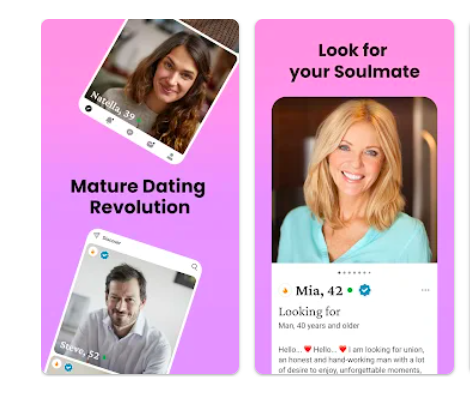Professional career
How to write a resume
Many people don't know how to write a resume and end up missing out on job opportunities. See how to write a resume here!
Advertisement
These days require you to know how to write a well-designed resume that meets the required requirements. Now you must tailor your targeted resume to fit the job description offered by the employer. Targeted resumes are not just a necessity, they are essential for you to find a good job. They present the best version of you and allow HR managers to see exactly what you bring to the company.
You know employers will only spend a few moments scanning your resume before deciding which pile to put them in. Therefore, in this article, we will look at a way to write a targeted resume that will make a difference when hiring. Therefore, one of the first steps to being hired is writing a well-structured CV, with relevant and up-to-date information about yourself. This helps your employer decide if your resume is the one they should choose. So whether you're writing your first CV or updating your previous one, we've got some great advice and tips.

How to write a targeted resume
Before you jump right in and put all of your information into your resume, it's very important to spend some time thinking about the order and structure of your resume. As well as the accuracy of the information that will be included in your resume, as it needs to be true.
Ideally, your resume should be written in an orderly and structured manner. However, depending on the role or organization you are applying for, you may need to order things a little differently to be more assertive.
Developing a Targeted Resume
The targeted resume allows a job candidate to showcase their skills by addressing the company's needs. This allows them to see how your skills and previous experience fit perfectly with what they require.
They also use targeted keywords that fit and attract attention to the qualifications needed for the position. You should highlight your strengths and focus your attention on that, but don't dismiss your weaknesses. Take responsibility for them and highlight your commitment to evolving. But you don't need to, and shouldn't, make them the main point of your resume.
Steps to Create a Targeted Resume
Write a standard resume with basic information for all purposes. This will save you some time creating a new resume every time you apply for a job. It's actually quite easy to take your existing resume and tweak it to meet new needs. So here is how you can proceed:
Create your complete CV
Think about everything you've done in previous jobs. Experiences acquired, professional qualifications, roles held, or anything that you can use as a basis to show who you are. Your standard resume is the heart of your targeted resumes. Employers will never see it, but it will allow you to show exactly who you are and your general capabilities.
Review job requirements
If you find a position that interests you, check the job requirements in the advertisement. Review the requirements and see how your education and experience compare to what they are looking for. You want the work to be for you and this is the step in the process that defines that.
Use the job requirements as a basis for changing your standard resume. So, highlight what the job requirements highlight and adapt your resume to fit what the company is looking for. Be careful not to overdo it.
Personal information on a targeted resume
This section of your resume should include information such as your name, address, contact number and email so potential employers know who to contact about your resume. It is important that you fill out this information correctly to avoid errors.
Personal profile / main achievements
This part of your resume should include a summary of the main things that will make you stand out for the position. The information provided in this section of your resume may include statements such as “Project analyst – specialist with in-depth knowledge of the work, from end to end, who helped the company save R$5 million while I was the project leader.”
Career history
In the career history section of your resume, you should list all of your previous roles, starting with your current or most recent role. Each role in this section must include your title, company name and dates (start/end) you worked at the institution. You should also include a brief summary (preferably in bullet point format) of your key duties and assigned responsibilities in each role.
Training and skills must be part of the targeted curriculum
This stage of your CV should include any relevant training and skills you have acquired during your life. Whether in previous roles, or in any activities outside of work, such as volunteering, for example. I suggest you put the most relevant skills and training at the top to demonstrate that you understand what the employer is looking for.
Education and professional qualifications
When talking about education on your CV, you should include all courses and qualifications related to university, college or school. These should be listed on your CV with the most recent first. You can include your professional results here too, if you didn't include them in the skills section mentioned above.
References
It is very important that you include at least two professional references in this section of your resume. They can be from current and previous employers, preferably the longest-lasting ones. This is to give your next employer confidence that you are a great person to hire as a professional.
Develop your targeted resume
Once you have finished putting together your standard resume and defining the requirements required by the hiring manager, you will need to change your resume to the targeted format. So, look at your standard resume and see how you can change it to the required template that you will send to your HR managers. To improve, add secondary keywords, other accomplishments, more training and skills to complete the resume. So, everything is ready and now you just need to send and wait for the interview.
Trending Topics

Find interesting people near you with Badoo!
Badoo revolutionizes online connections, with functions like video chat and extra security layers. Find out everything about it and how to use it!
Keep Reading
Work at Grupo Bimbo: see open positions!
Find out how to work at Grupo Bimbo. Open positions in several cities, with good salaries, benefits and career plans.
Keep Reading
How to buy cheap online
There are several options for you to buy cheap on the Internet, but some of them require more attention as they can cause problems. Look here!
Keep ReadingYou may also like

Tinder: the best online dating app!
Discover essential tips for success on Tinder. From creating a profile to having interesting conversations, we show you how!
Keep Reading
Best apps for editing Christmas photos!
Create personalized Christmas photos with frames, stickers, and filters! Discover the best apps to transform your festive memories.
Keep Reading